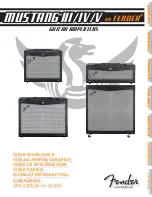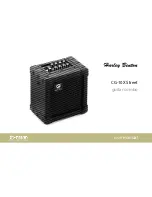
2
Powering options:
Power for operation in Mode 1 can be supplied by any of the following three options:
1.
A PROception PROPSU11F or PROPSU12F 12 V power unit connected in any of the output lines (Fig 1);
2.
A local AC/DC power adaptor capable of providing 5
-
15 V at 25
mA (such as the PROception
PROPSA125) connected to the DC power port (Fig. 1). The adaptor need not be regulated and needs
to have a standard 2.1 mm DC connector with the correct polarity (centre pin +ve);
3.
A DVB
-
T (FreeView) receiver of a type which can provide 5
V DC power from its antenna socket. A
separate power unit will not be required if this type of receiver is in use on any of the outputs,
provided that it can be left connected continuously to the mains supply.
In Mode 2 9V power is provided to the input of the PROAMP104X by the Sky* receiver (Fig. 2). The latter
must be configured in its INSTALLER SET
-
UP menu to provide power on RF OUT
-
2. On the Sky handset
press SERVICES, 4, 0, 1, SELECT, then select the SECOND OUTLET POWER SUPPLY option. Set this to be ON
(the default state is OFF), SAVE SETTINGS and BACK UP out of the menu. Most Sky* receivers (rated at 75
mA on RF OUT
-
2) can supply sufficient current to power the PROAMP104X together with up to four
industry
-
standard infrared eye receivers. For older Sky* receivers with only 50 mA current rating the
current consumption can be reduced sufficiently by adopting one of the following two measures:
1.
Use only PROception proSAT1EYE Mk. 2 eyes. The Mk. 2 version of this product (distinguished by its
hard
-
wired RF output lead) has a reduced current consumption of <5 mA;
2.
Alternatively connect a local AC/DC power adaptor capable of providing 12
-
15 V at 25
mA such as
the PROception PROPSA125 to the DC power port. The adaptor need not be regulated and needs to
have a standard 2.1 mm DC connector with the correct polarity (centre pin +ve). This power unit will
power the forward
-
path amplifier function and will reduce the loading on the Sky* receiver by
approximately 25 mA.
3
Fixing:
Fix the amplifier to a sound vertical surface such as a wall, skirting board or equipment mounting
board. Ventilation gaps of at least 50 mm should be left around the front and sides of the unit. More
clearance will be required below the unit to allow access for the signal cables.
Being fully screened, the amplifier will not be affected by proximity to an antenna. However clearance
of not less than 300 mm from the nearest part of the antenna should be observed to avoid degrading
the antenna's performance. Manufacturer's instructions regarding routing of the cable from the
antenna terminal box must be followed if provided.
Do not leave the amplifier resting on a carpet or install it where it may become smothered with
curtains or other soft furnishing fabrics. When installing the amplifier unit in a roof space ensure that
it will not come into contact with thermal insulation material.
Signal connections:
To preserve RF screening integrity the signal connections to the amplifier should be made using good
quality coaxial cable and connectors. This is particularly important with DTT to minimise the ingress of
impulsive electrical interference. The use of cable benchmarked under the CAI scheme is
recommended.
Crimp F connectors, used in accordance with the manufacturers instructions, will give the best
results. The importance of achieving sound braid connections cannot be over stressed.
System earth bonding:
Earth bonding terminals are provided on the amplifier castings for use where necessary (see Fig. 3).
Distribution systems supplying signals to more than one household should comply with the safety
requirements of EN 60728
-
11 . This effectively requires the system to be earth bonded. (The use of
isolated outlet plates is no longer recommended since they compromise screening integrity and allow
ingress of interference.)
Features
PROAMP104X
Number of outputs
4
Signal frequency range
Forward: 470
-
862MHz Return: 5
-
10MHz
Forward gain
4dB
Return gain
3dB (active in Mode 2 only)
Noise figure
3.0 dB
Output capability
89dBµV
Maximum recommended input
85dBµV
Isolation between outputs
>16dB
DC power requirement
Mode 1: 5
-
12V@25mA Mode 2: 9V@35mA
Input filter characteristic
>26dB rejection (relative to passband gain) for all frequencies <400MHz
Signal connector type
‘
F
’(
IEC 60169
-
24)
Operating temperature range
-
10
-
+40 °C
Notes:
1. Signal handling capability is given for 5 analogue TV channels plus up to 6 DTT multiplexes at
-
14 dB
relative level.
2. Limiting values 4.8
-
18V (powered via DC power port or any output, Mode 1).
3. Limiting values 8.5
-
12.6V (powered via input, Mode 2).
4. Excludes current drawn by infrared receiver eyes.
Special Note: Certain features of this amplifier are the subject of patent application GB 0602324.6




















